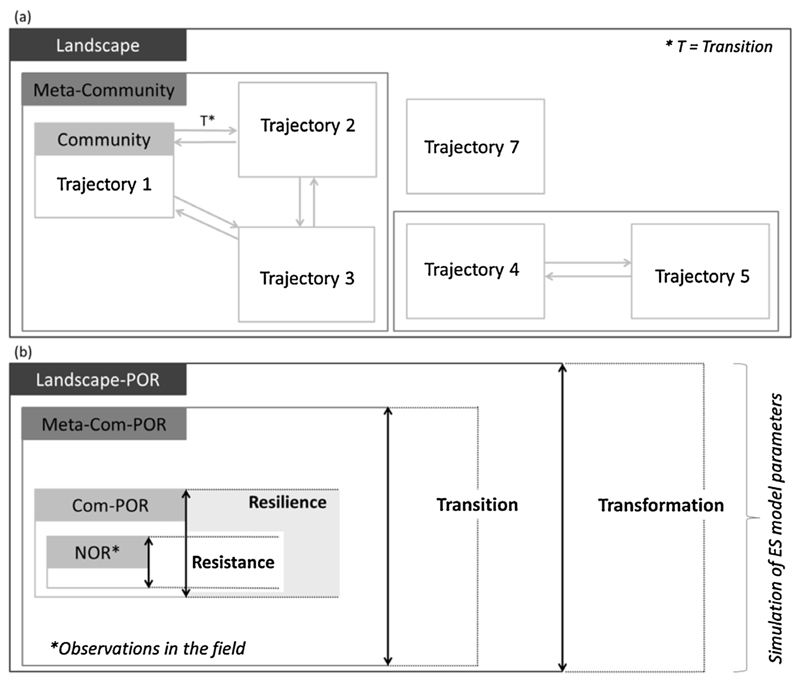Fig. 1.
Illustration of the conceptual approach. (a) State-and-transition model (STM) with the three scales (Community, Meta-Community, and Landscape) for the Lautaret study site. Trajectories refer to land use states characterized by past and present management: three on previously cultivated terraces (T1: currently mown and fertilized, T2: mown, T3: grazed in spring and autumn by sheep and cattle), and three on never cultivated grassland (T4: mown, T5: previously mown and currently grazed in summer by sheep and cattle, T7: never mown and grazed in summer by sheep and cattle since the Middle Ages, above 2000 m), (b) Corresponding operating ranges (OR) of ES provision linked to the three different scales of the STM.

